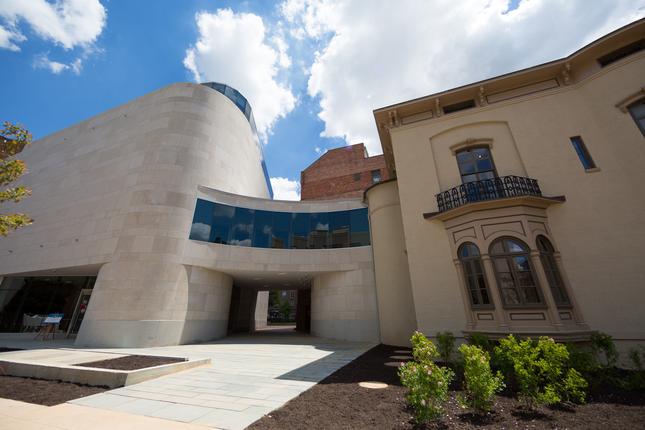Cultural Ins and Outs
By • March 11, 2015 0 1297

IN – Textile Museum
After nearly 90 years in Kalorama, the Textile Museum will open March 21 in a new Foggy Bottom facility as the George Washington University Museum and the Textile Museum. The largest exhibition in the museum’s history, “Unraveling Identity: Our Textiles, Our Stories,” will display more than 1,000 pieces through Aug. 24. On the grand opening weekend, there will be free activities at the new museum, 701 21st St. NW, as well as a textile symposium on Saturday at the School of Media and Public Affairs, 805 21st St. NW.
The design, by Hartman-Cox Architects, links a new 35,000-square-foot structure with the former university police headquarters, Woodhull House, which will become the home of a collection of Washingtoniana – rare maps, drawings, documents and correspondence – donated to the university by Albert H. Small in 2011. The director of the two museums, also an associate professor of Museum Studies, is John Wetenhall, a historian of modern art who got his Ph.D. at Stanford and was executive director of the Ringling Museum of Art in Sarasota, Fla., among others.
The origins of the Textile Museum were similar to those of the nearby Phillips Collection. It opened in 1925 in the S Street mansion of George Hewitt Myers (a collector of what were then known as Oriental rugs) and grew to be one of the major collections of non-Western textiles in the United States. The struggling museum was taken over by George Washington University a few years after a plan to open an annex in Penn Quarter was canceled in 2008. The university is also building a conservation and resource center on its Loudoun County, Va., campus.
OUT – Franklin School
On Feb. 9, Mayor Muriel Bowser abruptly announced the de-selection of the Institute for Contemporary Expression as the developer, with Anthony Lanier’s East Banc, of the landmark Franklin School at 13th and K Streets NW. A new Request for Qualifications, due March 23, has been issued, with a Request for Proposals to follow in the fall.
ICE’s plan to create a space for the presentation of cutting-edge art, especially large installation and multimedia works – along with education programs, a bookstore and a restaurant by José Andrés – was chosen by then Mayor Vincent Gray’s administration in February 2014. The building, designed in 1865 by Adolph Cluss, the architect of the Smithsonian’s Arts and Industries Building, became vacant when it ceased to be a homeless shelter in 2008. Several plans since then for its reuse went nowhere.
Collector Dani Levinas, executive director of ICE, has said that he was not consulted and his plan is solid. (Cost estimates vary from Levinas’s $13.2 million to more than $20 million.) It is not known if ICE will respond to the RFQ. In the meantime, there have been calls for revisiting the decision, with a letter circulating asking the mayor to “Please take this moment of public appeal to bring this matter back before the City Council.”

